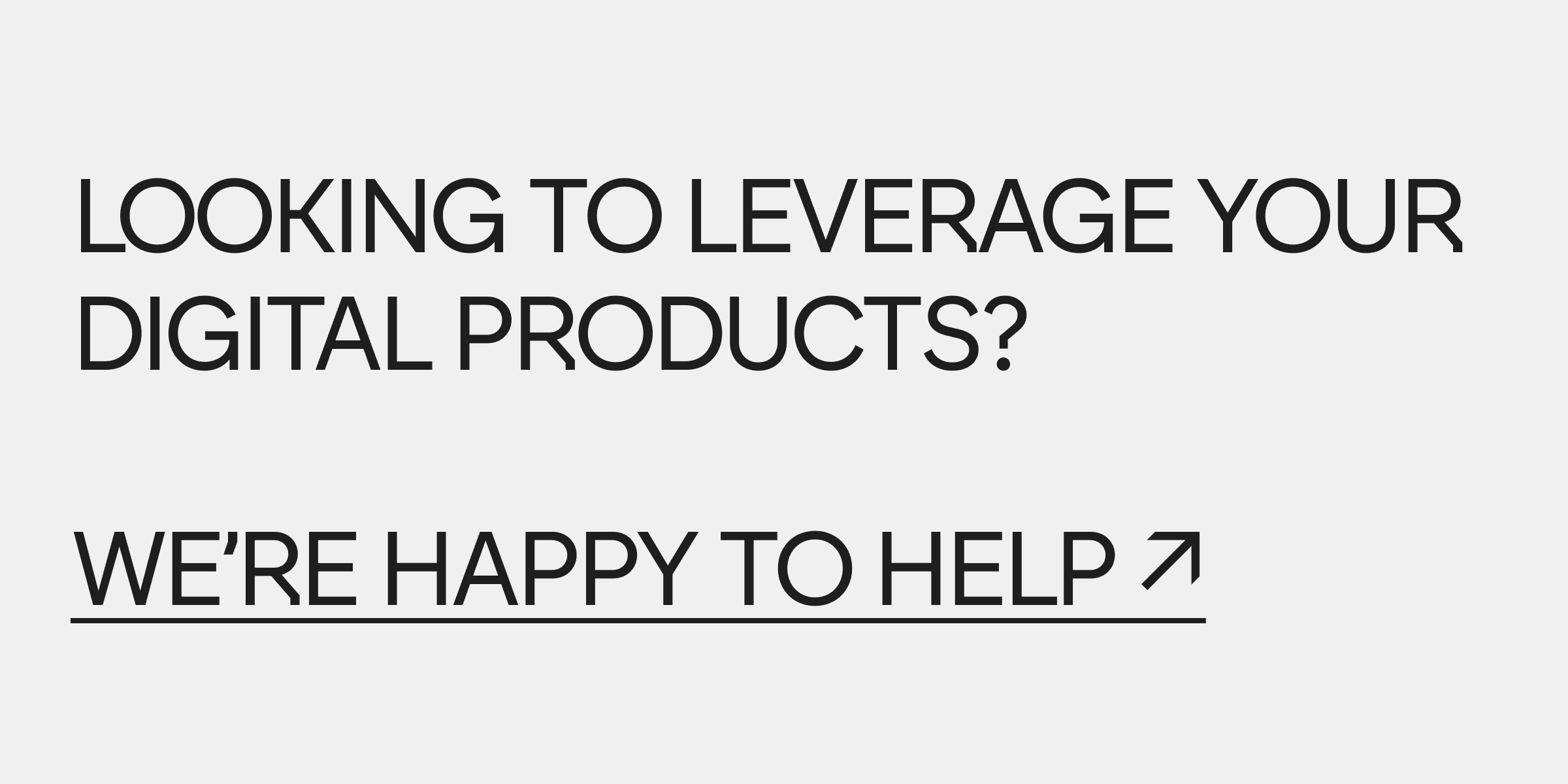In the past couple of years, headless software has gained quite a lot of traction. One of the most popular types of headless software includes headless content management systems. In our opinion, such systems provide developers with a quick and easy way to set up and manage website content. In fact, our very own website was set up using a headless content management system.
If you are wondering how a headless content management system works, read on! In the following article, we will go over everything you need to know about headless content management systems and the benefits of switching to one.
What is a Headless CMS?
To put it simply, a headless CMS decouples theseparates the backend content management from the frontend presentation layer of a website. It only handles the back-end content management and storage, leaving the front-end presentation to be handled by different technologies. As a result, it offers greater flexibility, scalability, and speed in deploying structured content across multiple platforms and devices.
If you'd like to learn more about headless software, make sure to read our article about the definition of headless in software development.
What Is the Difference Between a Headless CMS and a Traditional CMS?
A headless CMS differs from a traditional content management system in that it separates the back-end content management from the front-end presentation layer. In a traditional CMS, both content creation and presentation are intertwined, limiting flexibility for where and how content is displayed. A headless CMS, however, only handles content storage and management, delivering it to any front-end technology through different frameworks and static site generators, thus supporting a wider range of digital channels and more modern development frameworks.
Read more: Headless or Non-Headless Website Architecture: Which One Is Best for My Business?
What is a Headless API?
A headless API, also known as an application programming interface, typically refers to software solutions used in a headless CMS architecture to deliver content to various front-end systems. The said headless CMS solutions provide a way for the content stored in the back-end system to be accessed, manipulated, and delivered without an associated front-end display layer. In other words, a headless API is what enables a CMS to be headless, meaning that it can operate without the traditional presentation layer that defines how content appears to end-users.

What Is the Point of a Headless CMS?
A headless CMS can be particularly advantageous in several scenarios, where its flexible architecture aligns with specific business needs or technical requirements. By separating the data and logic layer from the presentation layer, a headless CMS allows companies to future-proof their applications. Here are some key situations where a headless CMS might come in handy.
If you need to publish the same content consistently across multiple platforms, such as websites, mobile applications, and even wearable technology, a content management system that's headless allows you to manage the said content from a single back-end and distribute it to any number of platforms, from websites and mobile apps to wearable devices. It is far more efficient than using different systems for different platforms.
Custom User Experiences
For projects that require highly customized user interfaces or need to deliver a unique user experience tailored to specific devices or conditions, a headless CMS offers the freedom to use any front-end technology. In such a scenario, it is fairly easy to leverage modern frameworks and tools to optimize performance and interactivity.
When you anticipate the need to scale an application dynamically or demand high performance, a headless CMS can be more effective than a traditional CMS. It separates content management from content delivery, reducing server load and improving response times.
Frequent Redesigns or Iterations
If a digital strategy involves frequent updates or redesigns of the user interface without altering the back-end structure, a headless CMS is definitely the way to go. It allows the front-end to evolve independently, which means redesigns and updates can happen with minimal back-end adjustments.
Integration With Other Systems
In environments where the CMS needs to integrate seamlessly with other systems, a headless CMS can serve as the content hub, interfacing smoothly through application programming interfaces. It facilitates a more cohesive technology ecosystem.
In the above-mentioned scenarios, a headless CMS provides a robust solution by focusing on efficient digital content management and versatile distribution capabilities, supporting a broad array of use cases that go beyond traditional website management.
What Are the Benefits of a Headless CMS?
A headless CMS offers several benefits, particularly in terms of flexibility, scalability, and the ability to integrate with modern technology ecosystems.
A decoupled CMS architecture, where the back end is responsible for content creation and storage while the front end handles content presentation, allows for greater flexibility and faster content delivery across different platforms and devices.
1 - Flexibility
Because a headless CMS decouples the backend from the frontend presentation layer, developers are free to use any technology stack they prefer for the presentation layer. It allows them to choose the most modern, efficient tools and frameworks suited to the specific needs of the project, whether that's creating a fast, single-page application or a complex web platform with dynamic, interactive elements.
2 - Security
With the separation of content management and content delivery, the attack surface is reduced. The CMS back-end can be completely isolated from the front-end, minimizing the risk of direct attacks on the content management and storage system.
3 - Page Speed
A headless CMS can contribute to faster page speeds, which is crucial for both user experience and SEO. Since the CMS serves only raw data through an API, there's no server-side rendering of HTML or execution of templating engines, which can be resource-intensive. Instead, content loads asynchronously, often leading to quicker interactions and rendering on the client side. Additionally, developers can implement advanced performance optimization strategies on the front-end, such as code-splitting, lazy-loading, and effective caching, without CMS constraints.
4 - Scalability
Because a decoupled CMS is only concerned with content management and not content delivery, the system can manage content and handle more user requests without degrading performance. It makes it easier to scale an application horizontally, by adding more servers or distributing load without complex reconfigurations.
5 - Omnichannel Capabilities
Headless content management systems empower organizations to deliver content seamlessly across various digital channels. Headless CMSes offer flexibility for e-commerce backends, suitability for mobile applications, and the ability to manage content across multiple platforms, including digital signage. As a result, businesses can ensure a consistent and cohesive brand experience across different touchpoints, fostering stronger customer relationships and driving conversion rates.
6 - Future-proofing
Adaptability is key to staying ahead of the curve. Headless content management solutions provide the agility and versatility needed to embrace emerging trends and technologies. This adaptability not only safeguards against obsolescence, but also positions businesses to capitalize on different opportunities in the digital space.
7 - Improved Developer Productivity
A headless content management system can help promote developer efficiency and collaboration. Since developers have the freedom to choose their preferred technology stack for the presentation layer, they can leverage familiar tools and frameworks, reducing the learning curve and accelerating development cycles.

What Are the Disadvantages of a Headless CMS?
While a headless CMS offers numerous advantages, particularly in flexibility and scalability, it also comes with several disadvantages that might make it less suitable for certain projects or organizations. In contrast, traditional CMS architecture, with its monolithic content delivery system where the backend and frontend are tightly integrated, enables users to easily manage and publish content from a unified application.
Increased Complexity
The separation of the front-end and back-end can lead to increased development complexity, especially for teams that lack experience with such architecture. Developers must handle integrations and may need to write more custom code to connect the front-end with the back-end, which can increase the time and skill required for development.
No Ready-made Templates
Traditional CMS platforms often come with built-in themes, templates, and content editors that make it easy to set up and customize the appearance of websites. In a headless setup, such features are absent, requiring that the front-end be built from scratch. It can end up being a major hurdle for users without significant front-end development resources.
Higher Costs
Building and maintaining separate systems for content management and content delivery might result in higher costs compared to using a traditional content management system, where everything is integrated. Additionally, costs can scale with API usage, which might become significant as traffic grows.
What Is an Example of a Headless CMS System?
There are several popular headless CMS platforms that cater to various needs, from enterprise-level solutions to more developer-focused options. Unlike a decoupled CMS, which has a frontend presentation layer attached, a headless CMS does not have this layer, allowing content to be utilized freely across different platforms. Given the wide range of functionalities, scalability options, and customization features these platforms offer, you should find it relatively easy to find a headless CMS that aligns perfectly with even the most demanding project requirements.
Contentful
Contentful is one of the most prominent examples of a headless CMS. It offers a cloud-based platform that allows developers to manage, integrate, and deliver content across all types of digital devices and channels. Contentful is designed to be highly flexible and scalable, supporting everything from websites and mobile applications to digital displays and connected Internet of Things devices.
Sanity.io
Sanity.io is highly customizable and excels with its real-time collaborative editing features. It offers a customizable editor that users can tailor to fit their content structures and workflows. Sanity is built on portable text, a JSON-based rich text specification, and provides excellent control over content with application programming interfaces for reading, writing, and patching content.
Strapi
Strapi stands out as a leading open-source headless CMS, specifically designed with developers in mind. Its robust architecture allows for quick and efficient management and deployment of content application programming interfaces, which is a boon for developers looking to tailor applications precisely to project needs.
Ghost
Originally a blogging platform, Ghost has evolved into a powerful content management system geared primarily towards professional publishing. Ghost is known for its clean, user-friendly interface and strong search engine optimization capabilities. It's a great choice for bloggers, journalists, and media publishers who need robust content management combined with custom front-end flexibility.
Prismic
Prismic is a software-as-a-service headless CMS that focuses on ease of use and rich content editing tools. It features a custom type builder for defining content models, slices for building dynamic layouts, and an intuitive editing interface. Prismic is well-suited for organizations that want managed hosting and straightforward content operations without extensive customization requirements.

How to Choose a Headless CMS
Choosing a headless CMS involves several critical considerations that ensure the selected system aligns well with specific project requirements and strategic goals. Here are a few important factors you should take into consideration.
-
Project requirements. Begin by mapping out the precise content management needs. Identify what types of content will be managed, and the volume of that content. Determine which platforms the content needs to be delivered to and whether the CMS should support multilingual content.
-
Technical compatibility. Evaluate which technologies are already in use or are planned for future use. The headless CMS should integrate seamlessly with these technologies. For example, if a project is heavily invested in a particular front-end technology like React or Angular, the CMS should have strong API support for these frameworks.
-
Scalability. Consider how the CMS will handle future growth in terms of content volume and user traffic. The chosen platform should be able to scale up efficiently and maintain performance without requiring significant changes or upgrades.
-
Developer experience. Since developers will interact with the CMS extensively, assess the development environment provided by the CMS. Look for supportive documentation, active community forums, and the availability of development tools that can help speed up development and troubleshooting.
-
Customization and extensibility. The CMS should offer ample customization options to fit the unique needs of the content team and the technical team. This includes custom fields, content models, workflow customization, and the ability to add features through plugins or API integrations.
-
Security features. Ensure the CMS has robust security measures in place, including regular updates and patches, secure data handling practices, and compliance with relevant data protection regulations. Consider the ability to manage access controls and roles effectively.
-
Budget. Weigh the initial costs, including any development costs, against ongoing expenses like subscription fees, hosting, maintenance, and upgrades. Open-source options might eliminate subscription costs but could require more investment in custom development and maintenance services.
-
Trial and evaluation. If possible, conduct a trial run or a pilot project using the CMS before fully committing. It gives you an option to gain some hands-on experience with the system and helps identify any potential issues or limitations that might not be apparent from vendor descriptions or reviews.
By carefully evaluating the aspects listed above, you can select a headless CMS that is a viable platform for future content strategies and growth. In other words, it will serve you for years to come instead of becoming a major pain in the neck after just a month or two.
Read also: HubSpot vs. WordPress - Which CMS is Right for Your Business Goals?
Is a Headless Content Management System Really Worth It?
In conclusion, the question of whether a headless content management system is worth it ultimately depends on the specific needs and goals of a project or organization. While a headless CMS offers numerous benefits, including flexibility, scalability, and the ability to deliver content across multiple channels, it also comes with its own set of challenges, such as increased complexity and potential maintenance overhead.
However, for teams looking to create dynamic, multi-platform digital experiences that require tight integration with existing systems, or for projects that demand a high degree of customization and control over the presentation layer, a headless CMS can end up being an invaluable and efficient tool.
In case you don't know where to start, our team would be more than happy to lend you a hand. You just have to fill out our contact form. We will get back to you as soon as we can!






